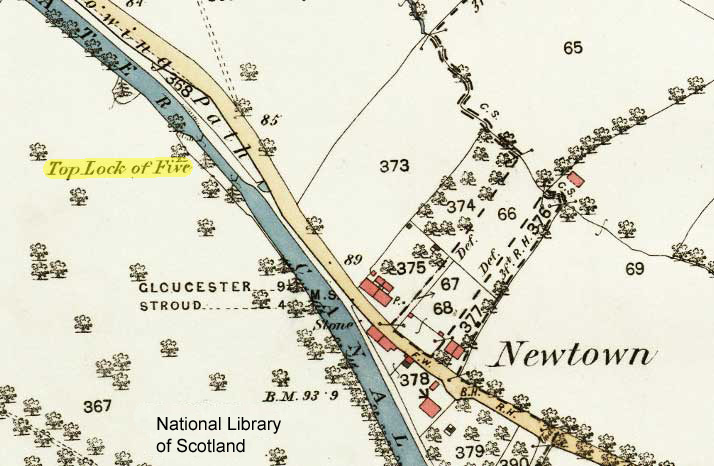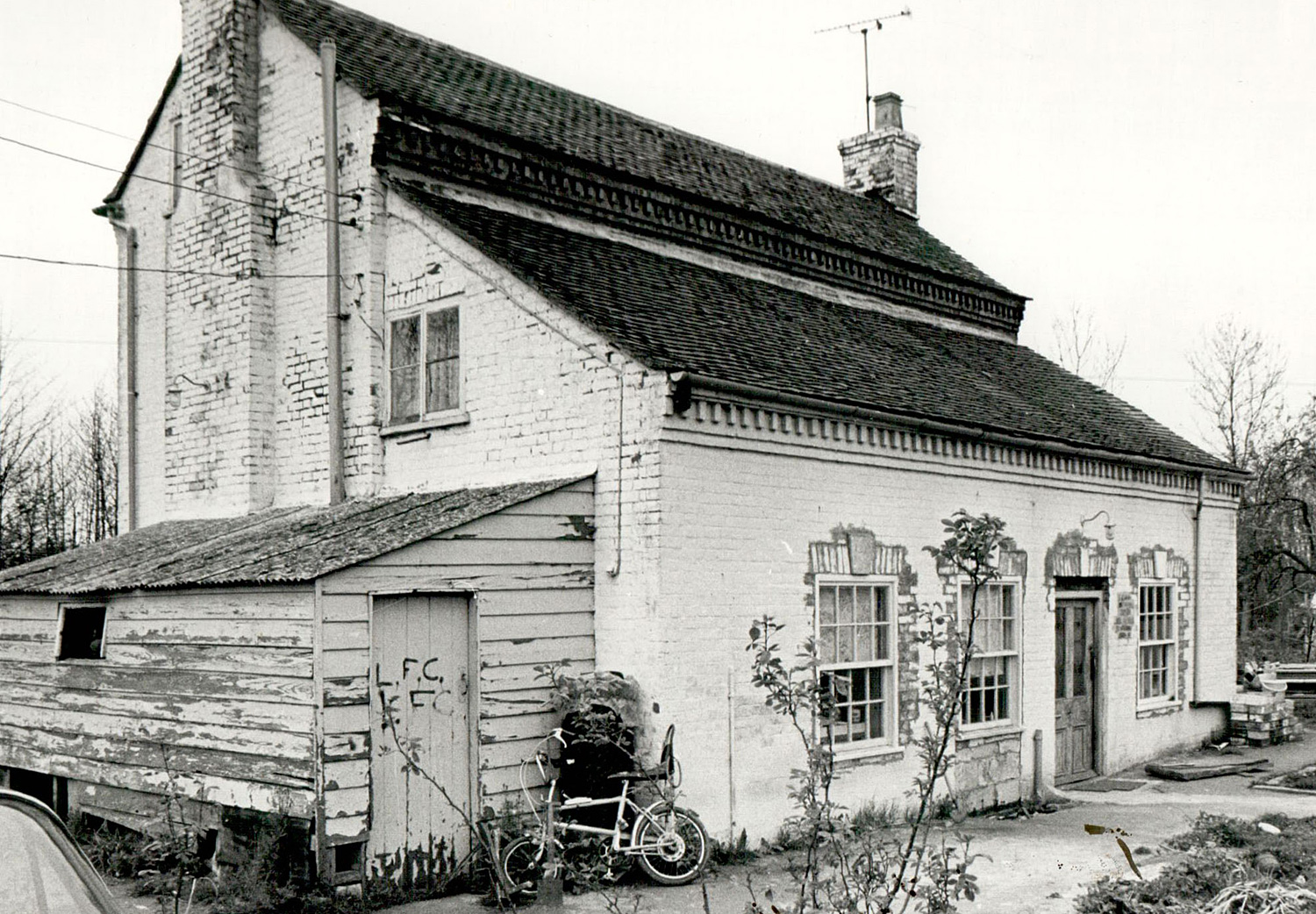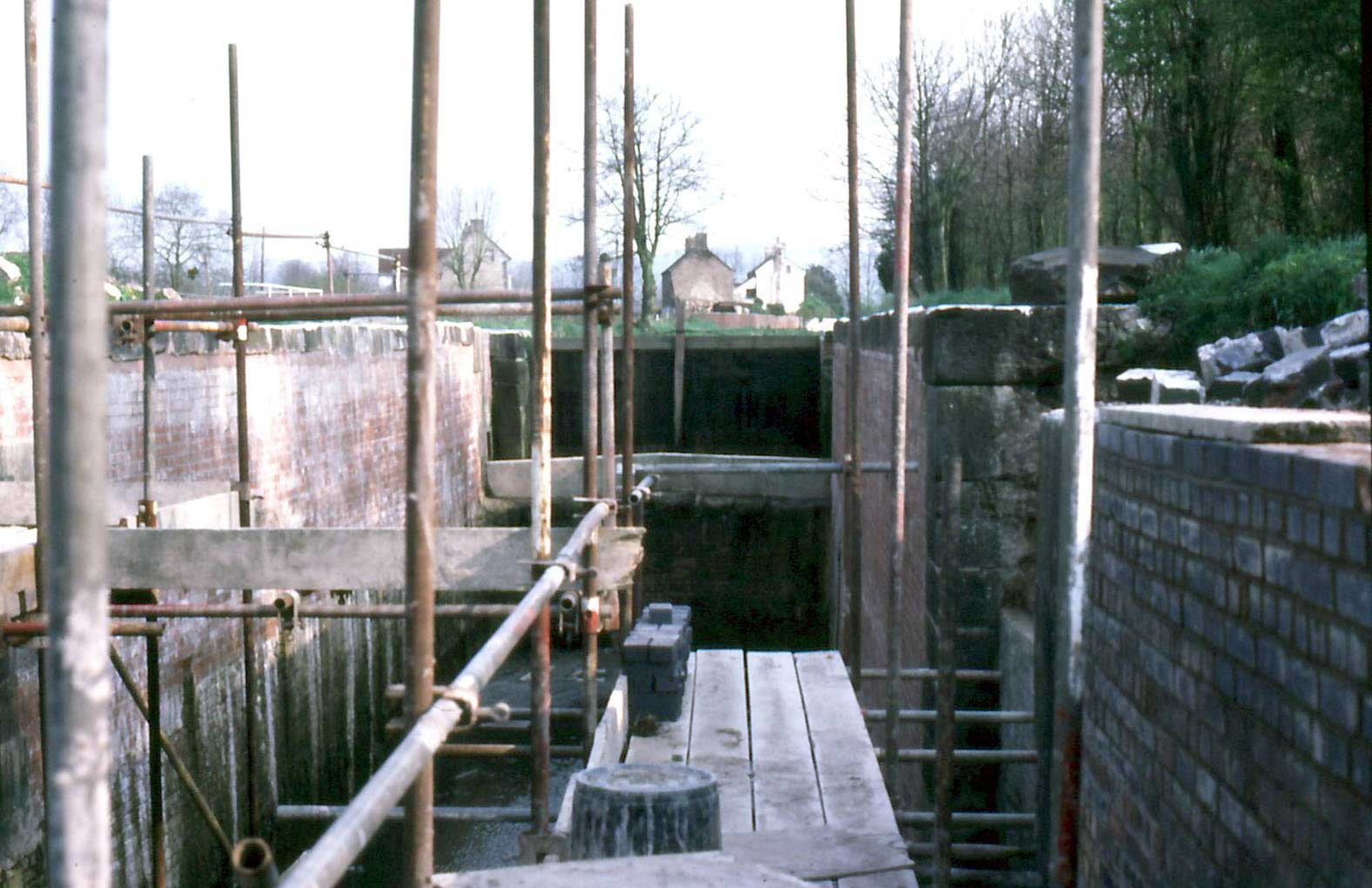This lock is now named after the nearby hamlet of Newtown, and it was the first lock to be restored.


Built in 1778, this lock was known for many years as Top Lock of Five in recognition of its position in the flight of five locks that raised the canal up the hill past the village of Eastington. (For more about building the five locks, visit Building the Eastington Flight).
Near the wood at each end of the lock are the remains of two original boundary stones. These mark the land needed to work the lock as normally the Stroudwater Company did not own any land on that side of the canal. Sadly, the upper part of each stone has been broken off so the inscription found on other such stones has been lost.


This hamlet developed in the early nineteenth century after a small triangle of land between the canal and what was then a turnpike road was sold by the Stroudwater Company in 1801, after earlier serving as a gravel store. Some of the residents were connected with the canal but most worked on the land or in local cloth mills.
In the centre of the hamlet was the New Inn which catered both for road travellers and for thirsty bargemen who had just worked up the local flight of locks. It seems that visiting barges were not always moored properly as many crewmen were fined for 'obstructing the trade at the Five Locks'. The beer house had an entrance on the canal side, but that was usually locked at night to discourage local revellers walking home along the towpath.
In 1900, the tenant of the house adjoining the New Inn was ordered to repair the canal bank after it was found that he had cut a ramp to enable his ducks to pass to and from his garden. A few years later, the local Sanitary Authority complained of a smell from noxious matter in a ditch draining into the canal from the house and the New Inn, and both owners made alterations to avoid any further overflow.
Between the towpath and the former turnpike road is a fine milepost marking a distance of four miles from Stroud.


After the canal was closed in 1954, the old wooden gates were replaced by a concrete dam to maintain the water levels suitable for local anglers. Then in 1978 the forerunner of the Cotswold Canals Trust started to organise working parties here to help promote the aim of full restoration.
After much hard work, Newtown Lock was the first on the Stroudwater to be fully restored, and the first boat passed through in October 1991. A plaque on one of the upper gates remembers David Boakes who was secretary of the Canal Trust during this period and died in 1989.
For the triangular site's former role as a source of gravel, see D1180/10/2.
For the site's sale to the Company's head carpenter in 1801, see D1180/1/2 p331.
For 'obstructing the trade', see D1180/1/6 p149-255.
For beer house door locked at night, see Str Jnl 8 Feb 1868 p5.
For access for ducks, see D1180/9/10 p474.
For noxious matter in the ditch, see D1180/1/8 p187-205.
For concrete dams, see D1180/9/54.
For lock restoration, see Trow Archive 1978-1991.